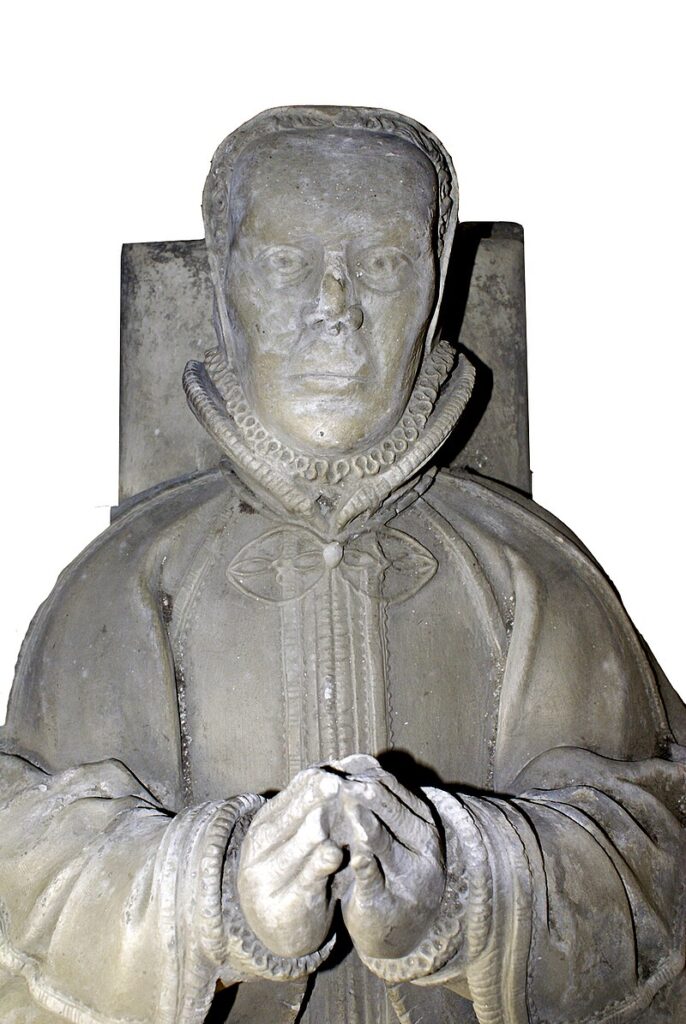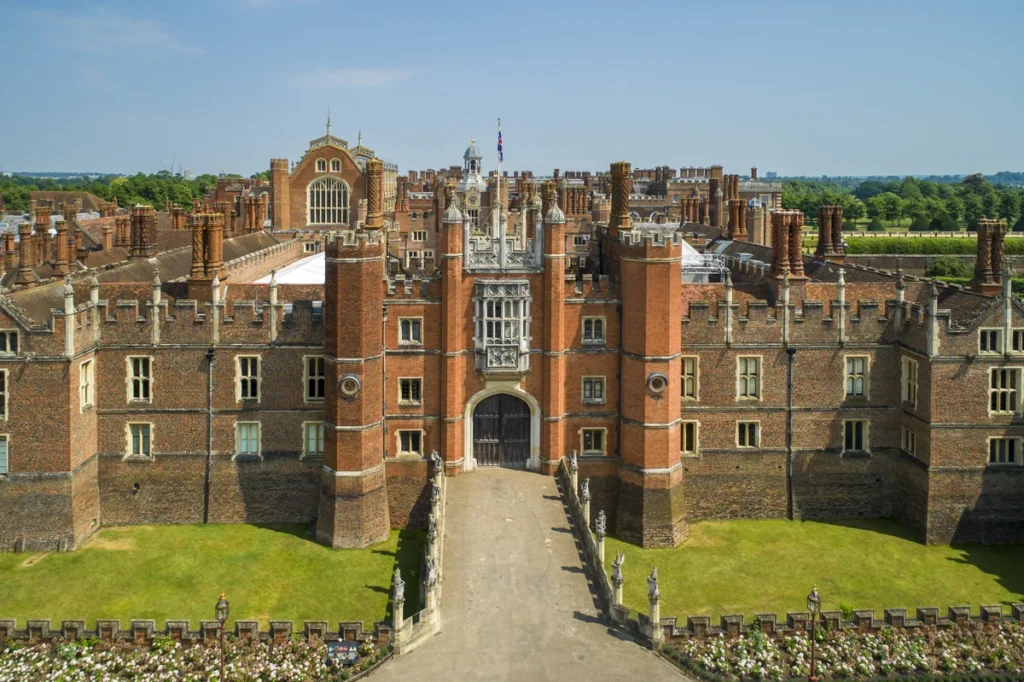The Haunted Legacy Of Sybil Penn
Imagine wandering through the grand halls of a historic manor, only to feel an eerie chill down your spine, as if someone unseen is watching you. Welcome to the world of Sybil Penn, the “Grey Lady” of Hampton Court Palace—a figure whose spectral presence has captivated and unnerved visitors for centuries. Let’s delve into the ghostly lore that surrounds this enigmatic spirit and explore how Sybil Penn’s posthumous presence continues to intrigue and terrify.
Historical Background
Sybil Penn: The Faithful Nursemaid
Sybil Penn was born in the early 16th century, a time marked by the grandeur and turmoil of the Tudor dynasty. Although details of her early life are sparse, it’s likely she came from a modest background, which set her on the path to domestic service. Young Sybil would have been trained in the practical skills needed to manage a household, a preparation that eventually led her to a significant role within the royal court.
As a young woman, Sybil married Richard Penn, and they had children. Her marriage did not deter her from pursuing a career in royal service, a path that would come to define her legacy. Sybil’s most notable role was as a nursemaid to Edward VI, the long-awaited son of King Henry VIII and his third wife, Jane Seymour. Edward’s birth in 1537 was a monumental event, as he was the male heir Henry VIII had desperately desired. Sybil’s responsibility for Edward’s care placed her in a position of immense trust and importance.

Her dedication to Edward VI was profound. As his nursemaid, Sybil ensured his daily health and well-being, a significant task in a court rife with political intrigue and health risks. Her loyalty and meticulous care earned her respect and a secure place within the royal household, allowing her to witness the inner workings of the Tudor court firsthand.
Following Edward VI’s untimely death in 1553, Sybil continued her service under Queen Elizabeth I. This transition from serving a young king to attending to a reigning queen marked a significant shift in her duties. Elizabeth, who ascended the throne in 1558, was known for her intelligence and strong will. Sybil’s role likely included nursing the queen during illnesses and providing companionship, reflecting her trusted status within the royal household.
Sybil’s life of service ended in 1562 when she succumbed to smallpox, a deadly and common disease of the time. Her death was a significant loss to the royal household, given her long and loyal service. Sybil Penn was buried in St. Mary’s Church in Hampton, a testament to her esteemed position. Her legacy of dedication and loyalty endured, remembered by those who valued her contributions to the royal family.

Hampton Court Palace
Hampton Court Palace, located on the banks of the River Thames, has a rich history dating back to the early 16th century. Originally built for Cardinal Thomas Wolsey, it became a royal residence when Wolsey fell from favor and Henry VIII seized the palace. The opulent halls, grand gardens, and intricate Tudor architecture have made Hampton Court a site of historical significance and, as it turns out, supernatural activity.
The Ghostly Legend
The Reawakening
The legend of Sybil Penn’s ghost began in earnest in 1829 when her tomb was disturbed during renovations to St. Mary’s Church. Almost immediately after, strange occurrences were reported at Hampton Court Palace. Whispered voices, phantom footsteps, and inexplicable cold spots heralded the arrival of the Grey Lady, believed to be none other than Sybil Penn herself.
Paranormal Activity
Witnesses have reported seeing a grey-clad figure wandering the halls, particularly in the Clock Court and the Georgian rooms. Some have felt a sudden drop in temperature or a light, unseen touch. Others have heard the faint sound of spinning wheels—Sybil Penn was known for her skill at spinning wool, a talent she seems to continue practicing in the afterlife.

The King’s Staircase
One of the most famous sightings occurred on the King’s Staircase, where a spectral figure matching Sybil Penn’s description has been seen gliding silently. This area, steeped in history and often devoid of modern intrusions, provides a fitting stage for such ghostly manifestations.
The Haunted Gallery
Another hotspot for paranormal activity is the Haunted Gallery, a corridor with a notorious reputation. Some visitors have reported seeing a grey mist or a shadowy figure darting across the room. The gallery’s eerie atmosphere is intensified by its connection to Catherine Howard, Henry VIII’s fifth wife, who was arrested there. Though more often associated with Catherine’s ghost, the Haunted Gallery has also been linked to sightings of the Grey Lady.
Skepticism and Belief
The haunting of Sybil Penn has sparked considerable debate. Skeptics argue that the sightings and sounds can be attributed to natural causes—drafts, creaky floorboards, or the power of suggestion in a place with such a rich history. However, the consistency of the reports over nearly two centuries gives pause even to the most rational minds.
A Historical Curiosity
Regardless of belief, Sybil Penn’s ghost has become an integral part of Hampton Court Palace’s allure. The tales of her spectral appearances add a layer of mystery to the already storied halls, drawing both history buffs and paranormal enthusiasts alike. Tours of the palace often highlight these ghostly legends, blending historical fact with eerie folklore.
The Grey Lady’s Enduring Presence
Sybil Penn’s story is a testament to the enduring human fascination with the supernatural. Her ghostly presence serves as a bridge between the past and present, a reminder that history is not only about dates and events but also about the lingering echoes of those who lived through them.
Modern Encounters
In recent years, the advent of paranormal investigation shows and social media has brought renewed attention to Sybil Penn’s ghost. Visitors to Hampton Court Palace often share their eerie experiences online, adding contemporary layers to the Grey Lady’s legend. These modern accounts range from photographs capturing mysterious figures to videos documenting unexplained phenomena, ensuring that Sybil Penn’s story continues to captivate new audiences.
Hampton Court Palace: A Paranormal Epicenter
Hampton Court Palace’s reputation as a haunted location isn’t limited to Sybil Penn alone. The palace’s long history is filled with tales of ghostly encounters, from the anguished wails of Catherine Howard to the spectral appearances of Jane Seymour. However, Sybil Penn’s ghost remains one of the most persistent and frequently reported, cementing her status as a key figure in the palace’s paranormal lore.
The Broader Context of Ghost Stories
Historical Ghosts
The fascination with ghost stories isn’t unique to Hampton Court Palace. Throughout history, tales of spirits and hauntings have been prevalent in many cultures. These stories often reflect societal beliefs and anxieties, serving as a way to make sense of the unknown. Sybil Penn’s ghost fits into this broader tradition, embodying themes of loyalty, service, and the lingering presence of the past.
The Role of Ghost Stories in Culture
Ghost stories play an important role in cultural history, providing a means of exploring the supernatural and the afterlife. They often serve as cautionary tales or moral lessons, reflecting the values and fears of the time. In the case of Sybil Penn, her ghostly presence at Hampton Court Palace adds a layer of narrative depth to the historical site, enriching visitors’ understanding of the past.
The Psychology of Ghost Sightings
From a psychological perspective, the human mind is naturally inclined to see patterns and make connections, even in the absence of concrete evidence. This tendency can lead to experiences of the paranormal, particularly in environments charged with historical significance and emotional weight. The consistent reports of Sybil Penn’s ghost at Hampton Court Palace can be seen as a reflection of this phenomenon, where history and psychology intertwine.
Conclusion
Sybil Penn’s ghostly presence at Hampton Court Palace continues to intrigue and terrify, blending historical fact with eerie folklore. Her story serves as a reminder of the enduring human fascination with the supernatural and the ways in which history’s echoes can linger long after the events themselves have passed.
The Grey Lady of Hampton Court Palace remains a captivating figure, her ghostly tale adding a spectral sheen to the grand narrative of one of England’s most historic sites. Whether one believes in ghosts or not, Sybil Penn’s legend is a testament to the power of storytelling and the ways in which history can come alive—sometimes literally—in the places we least expect.
Interested in learning more? We recommend:
- Books: The Ghosts of Hampton Court Palace by Sarah McCabe
- Documentaries: Haunted Britain series, featuring an episode on Hampton Court Palace
- Websites: Visit the official Hampton Court Palace website for more historical and ghostly tales
- Video Series: YouTube channel Haunted Histories explores the history and legends of Hampton Court Palace
Have you ever encountered a ghost or felt the presence of something otherworldly? Share your experiences in the comments below! Let’s keep the conversation about our spooky history alive and thriving.

